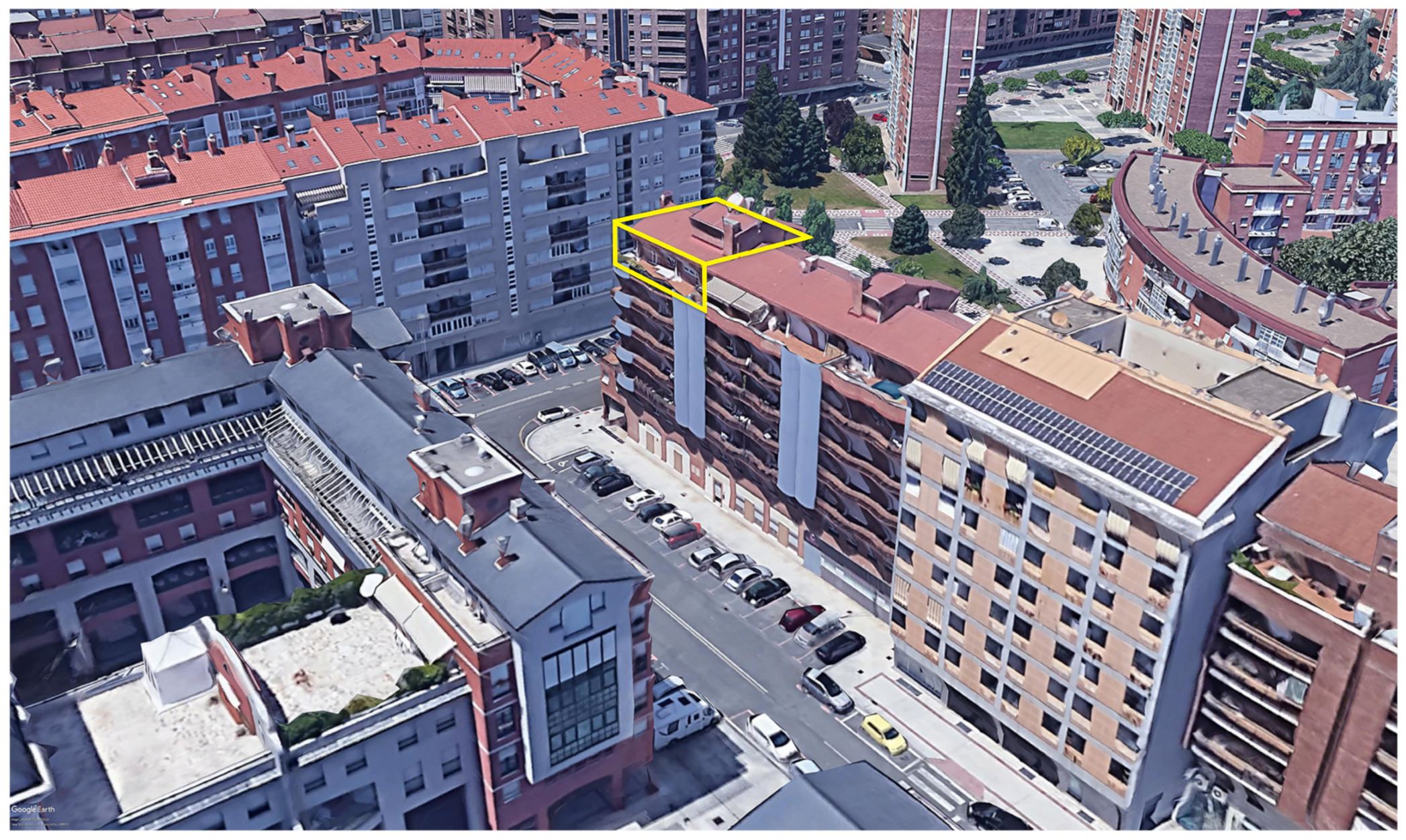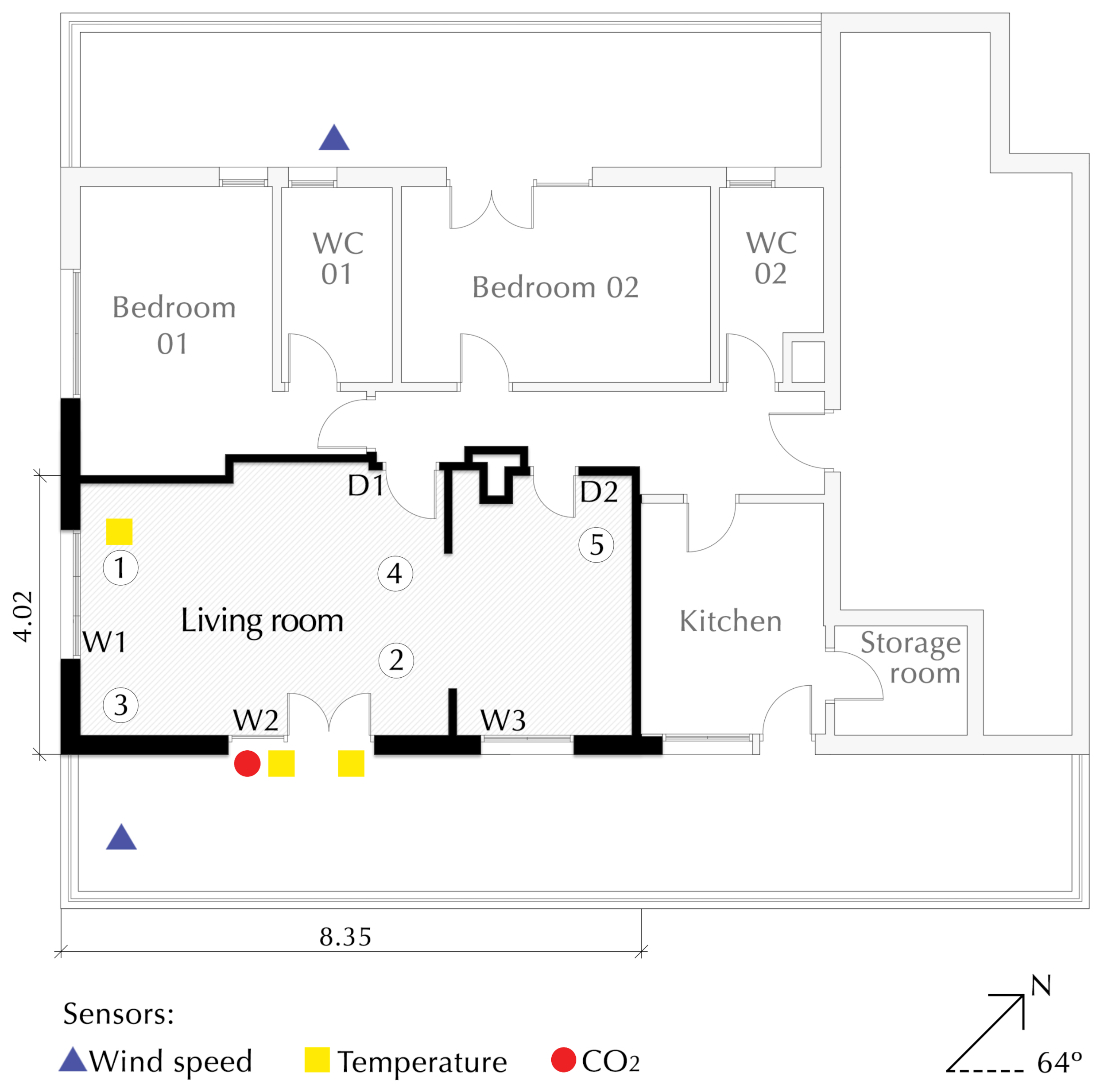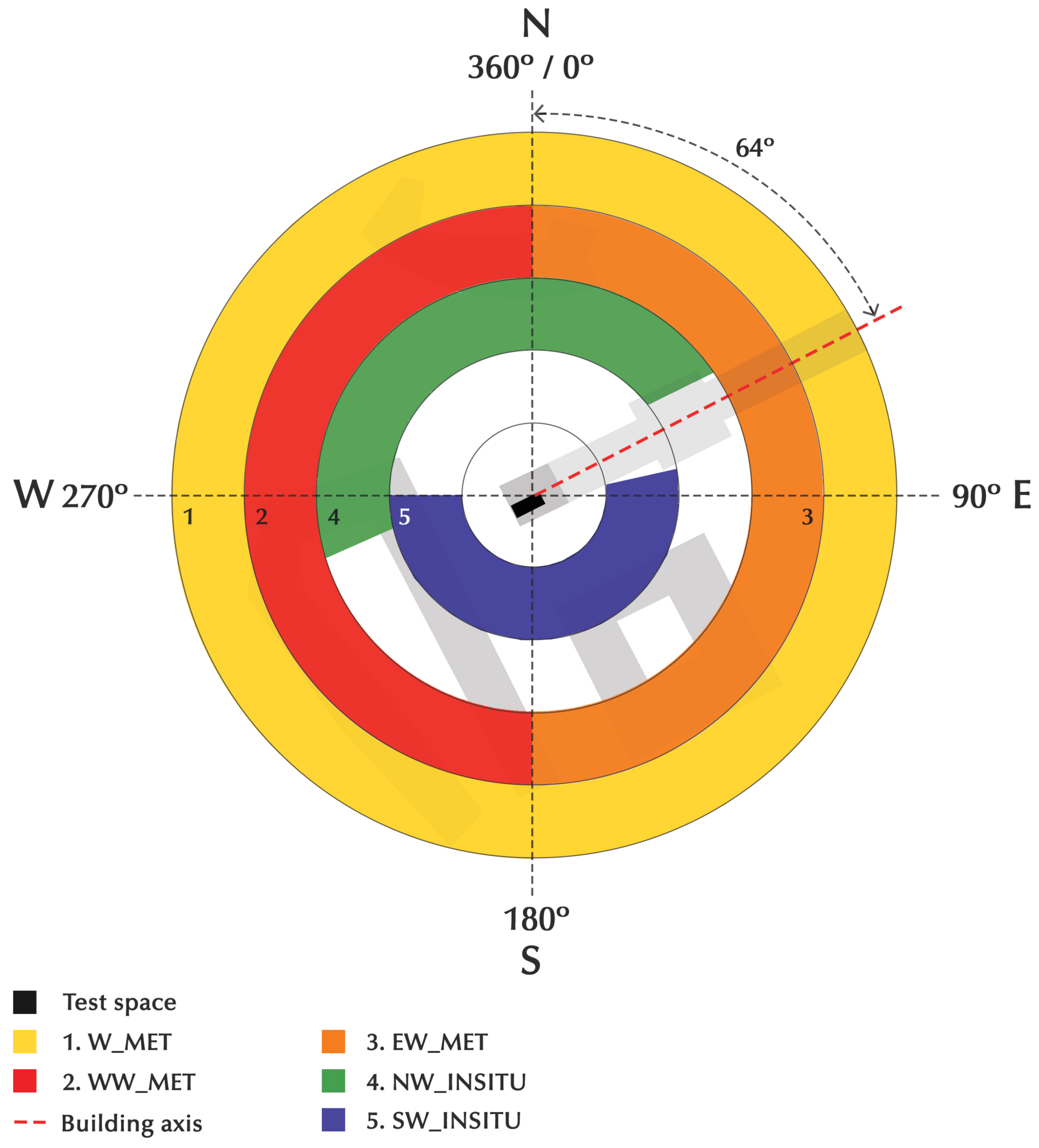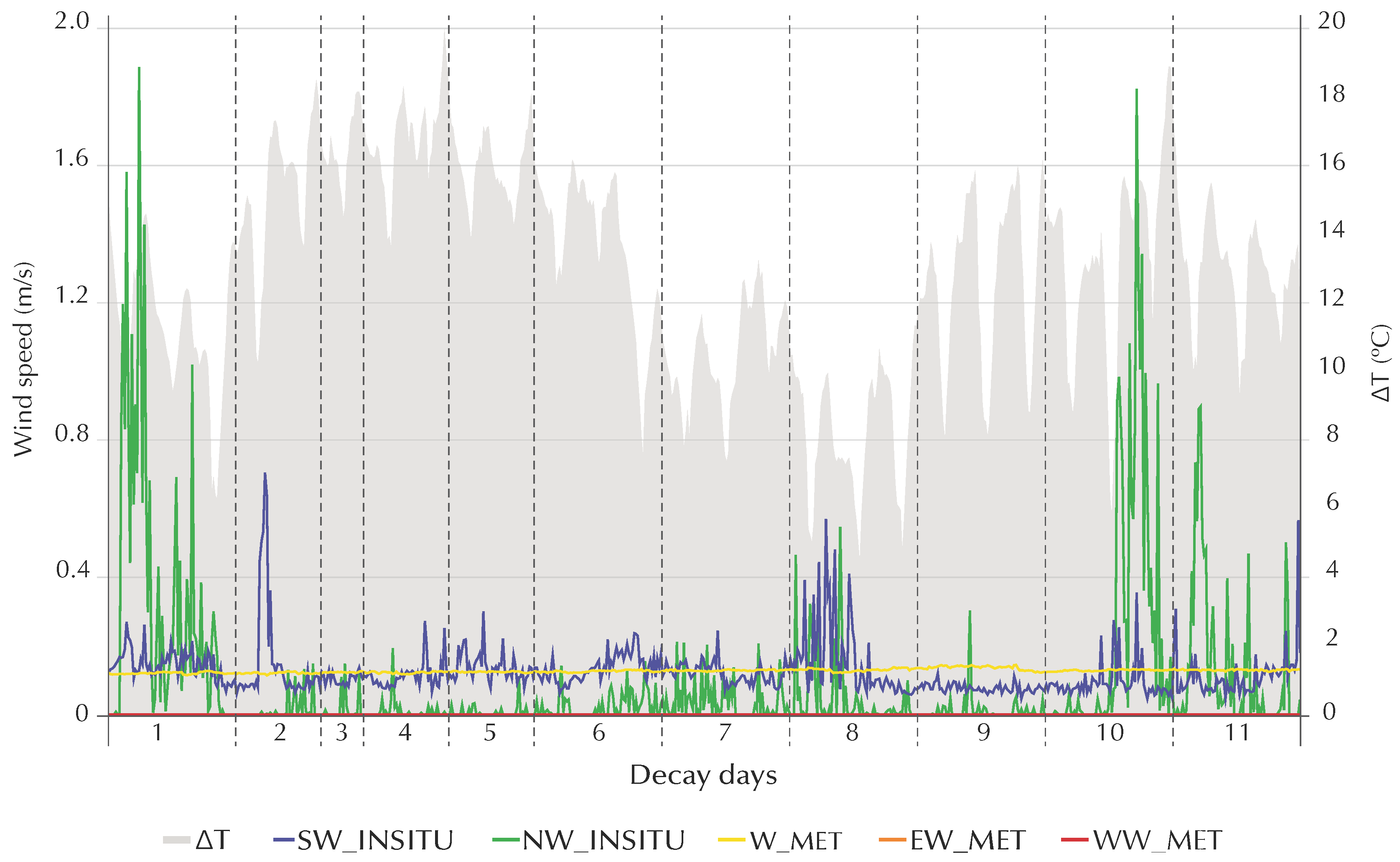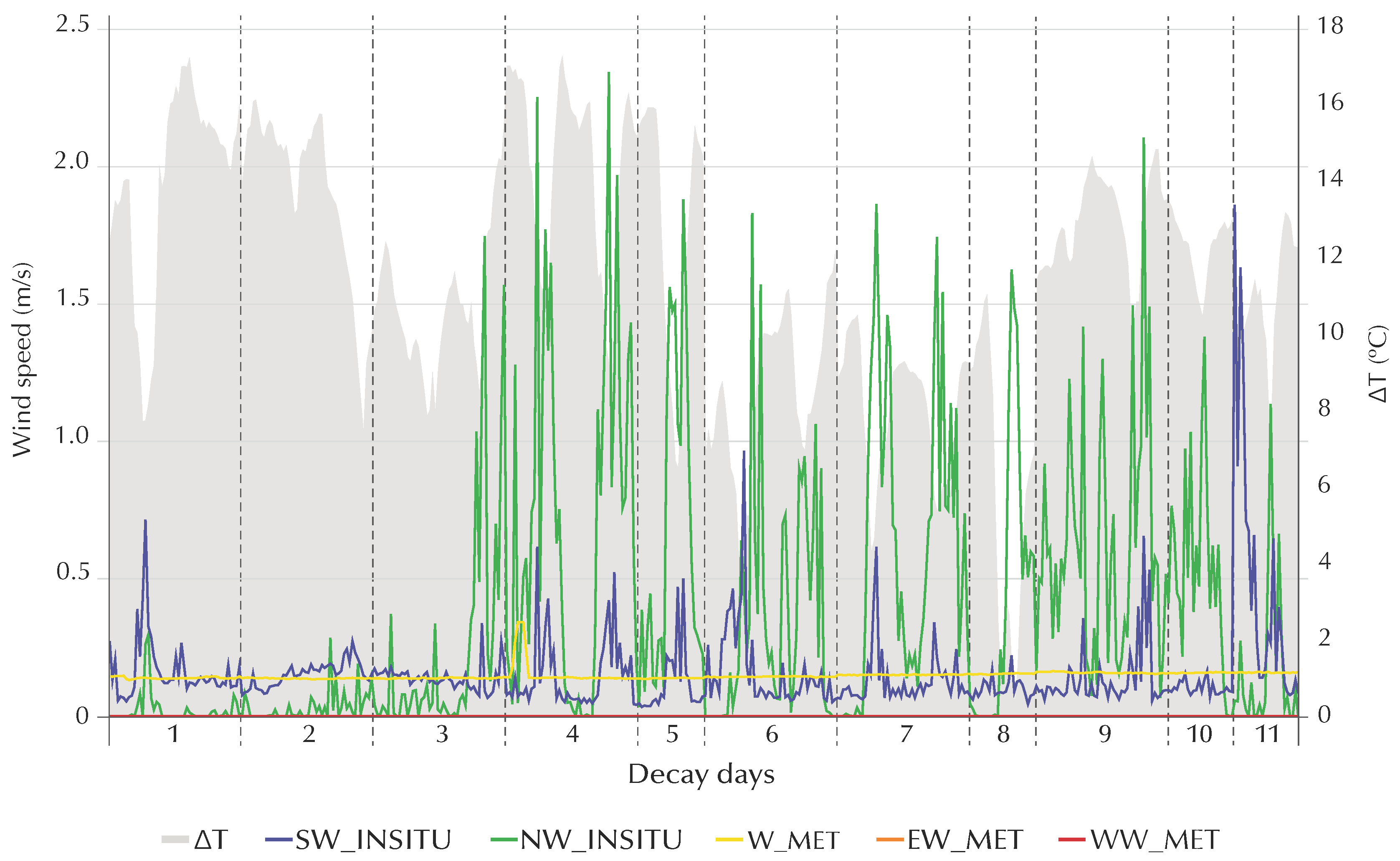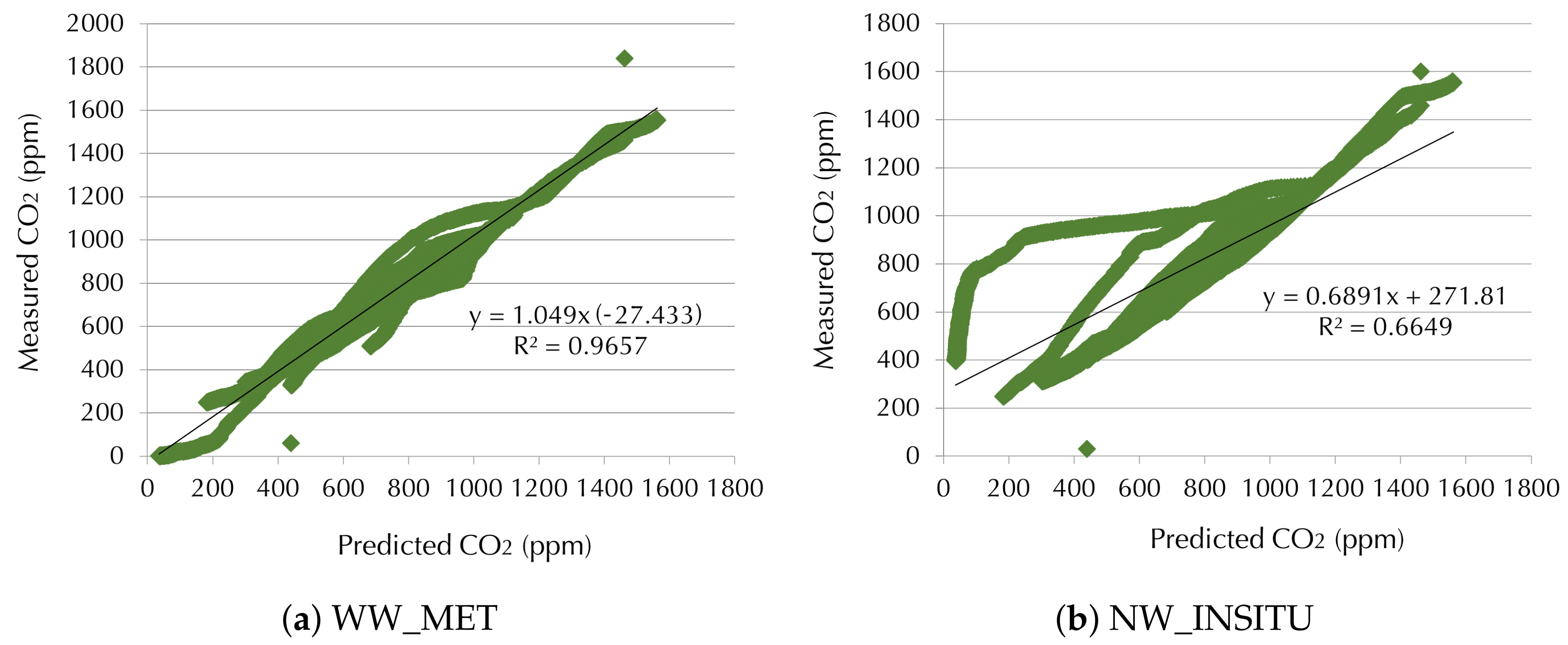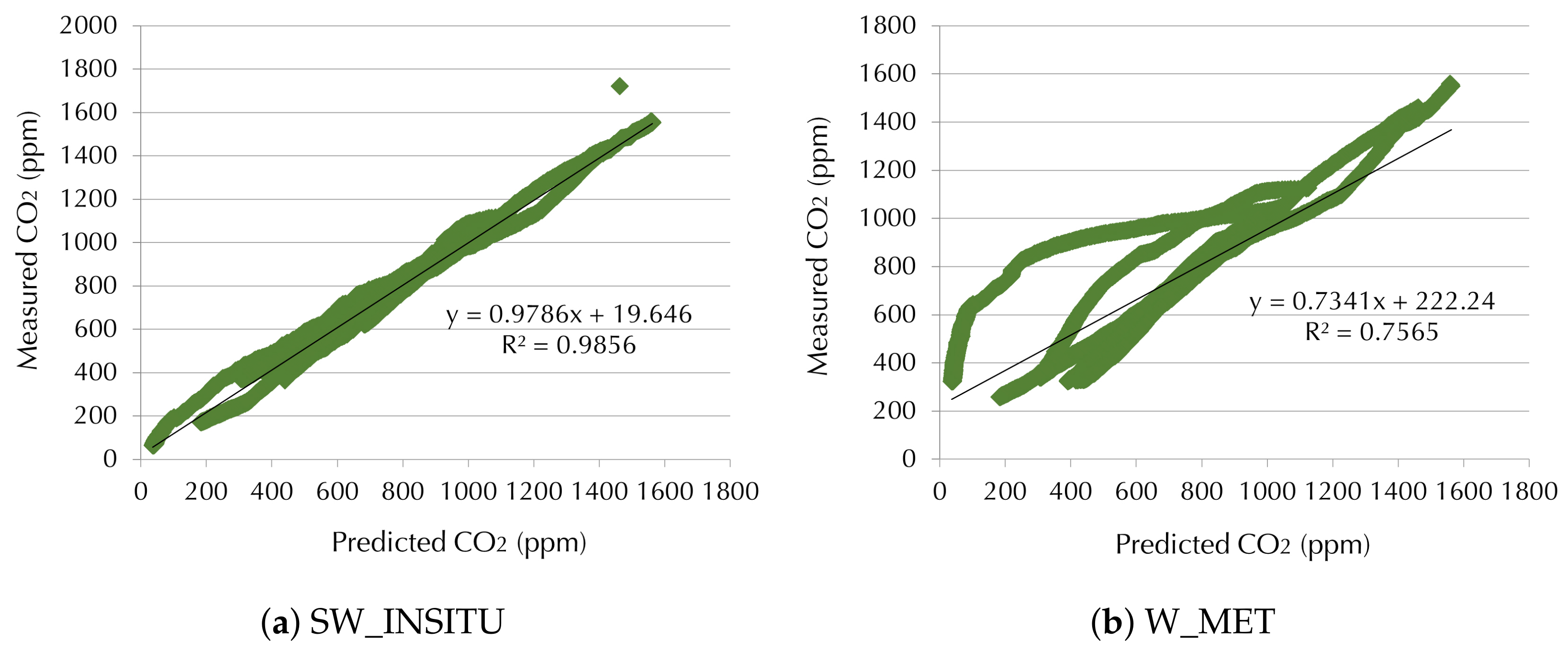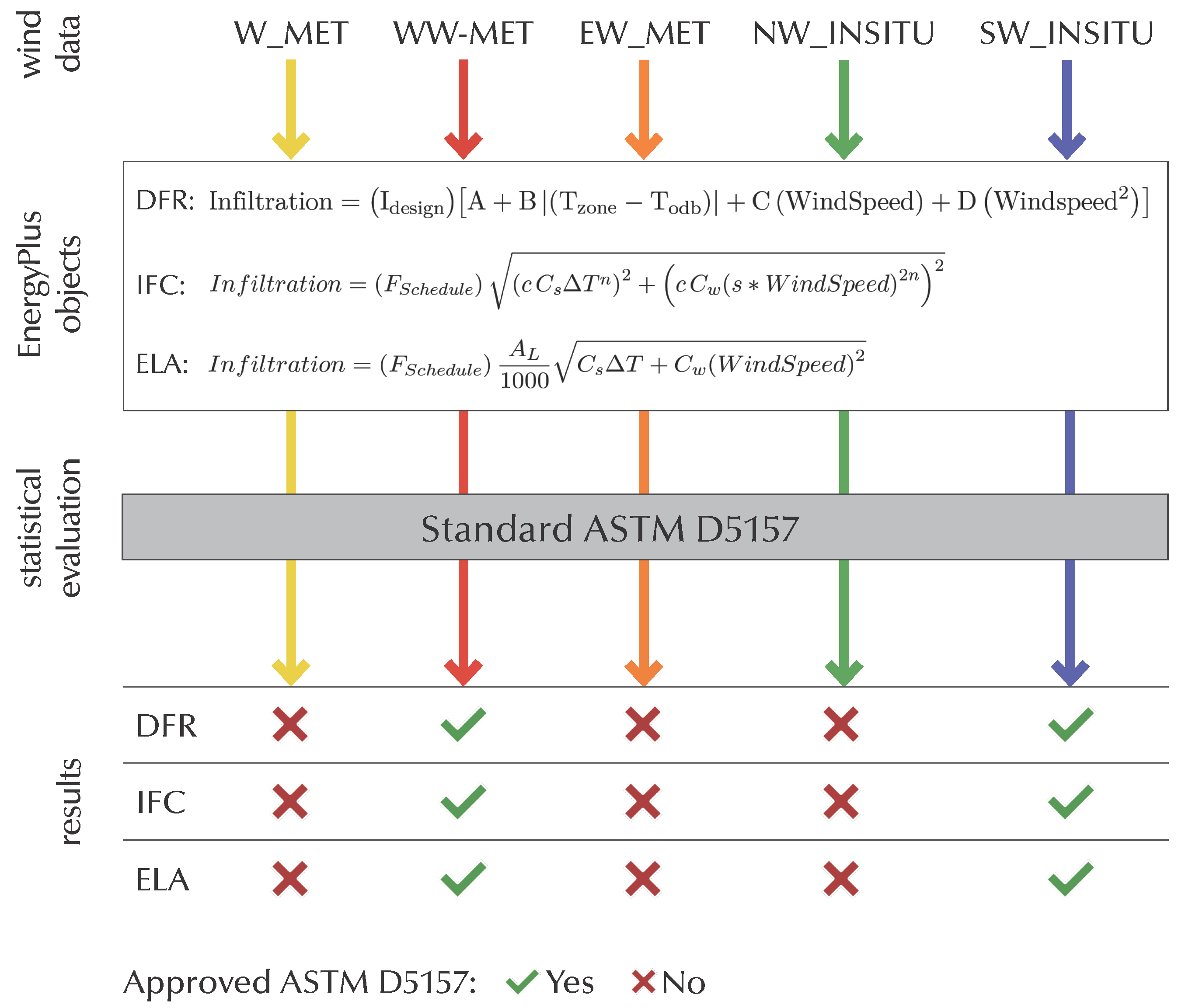1. Introduction
In 2020, the European Union (EU) provided an unprecedented response to the coronavirus crisis that hit Europe and the world through hlNext Generation EU (NGEU): a temporary instrument called Recovery and Resilience Facility (RRF). The RRF makes EUR 750 billion (in 2018 prices) in grants to ease the recovery actions and investments carried out by Member States [
1]. The main goal of the RRF is to reduce the social and economic footprint created by the pandemic and to make European societies and economies more resilient, sustainable, and ready for a new paradigm based on green and digital transitions. A minimum of 30% of expenditure should be dedicated to climate investment and reforms [
2]. Among the flagship areas, buildings renovation appears as the most crucial, because building retrofitting is probably the most cost-effective way of cutting down greenhouse gas emissions [
3].
Furthermore, the European Union proposed a set of directives to eradicate inefficient buildings, by enforcing the Energy Performance of Buildings Directive (EPBD). In this framework, building energy retrofit projects will rely on using digital twins, which can be created by using building information modelling (BIM) technology, followed by a building energy model (BEM) to quantify energy savings. For this purpose, the interoperability between BIM and BEM should be considered, in order to guarantee the confidence of investors in the energy efficiency sector [
4]. However, BEM requires adjustments of input parameters that are unknown and difficult to measure, leading to high unpredictability in energy savings. Therefore, the limitations in the analysis of building energy retrofit are mainly due to the lack of accuracy of the model.
1.1. Background and Motivation
Retrofit projects typically use a calibrated BEM to ensure that building systems are properly modeled. There are challenges in the calibration process for the measurement and verification of energy savings, which can be based on mathematical algorithms and physical-based models and are evaluated according to uncertainty analysis [
5,
6,
7]. As stated by the
ASHRAE Handbook: Fundamentals: SI edition (2017) [
8], several difficulties prevent achieving a calibrated simulation [
9,
10,
11,
12]. One of them is the method used to measure the input parameters needed for the simulation, i.e., infiltration values [
13,
14,
15,
16].
Infiltration is also known as the flow of outdoor air into a building through unintentional openings. Similar to natural ventilation, infiltration is driven by the pressure differences across the envelope caused by air and wind density variability generated by the temperature differences between indoor and outdoor air. For that reason, infiltration has two components: stack pressure and wind pressure. Stack pressure is the hydrostatic pressure produced by the mass of a column of air inside or outside a building [
17]. When wind impinges on a façade, it creates a distribution of static pressures that depends on the wind speed, wind direction, surface orientation, air density, and surrounding conditions [
18]. Moreover, if there is infiltration in a building envelope, it could affect the heating and cooling loads. If the outside air entering the building is cold, the heating load could increase by 13% to 30%. On the other hand, if it is warm, the cooling load could increase by 4% to 14% [
19,
20]. Furthermore, some studies estimated that air leakage could be responsible for 50% of energy loss [
21,
22]. In the current context, where regulations are being created to reduce carbon emissions [
23], it is relevant to control any cause of increasing building loads, one of the most important of which is leakage airflow, and, therefore, its precise measurement and correct input in BEM software should be carried out.
1.2. Infiltration Modelling
Detailed models for air leakage can be produced by using multizone airflow or CFD software. In EnergyPlus, the AirFlowNetwork (AFN) model can be used to determine model infiltration and mixing airflow between zones with or without HVAC operation. It presents three empirical equations to calculate infiltration: ZoneInfiltration:DesignFlowRate, ZoneInfiltration:FlowCoefficient, and ZoneInfiltration:EffectiveLeaka-geArea. In addition to facilitating more accurate calculations of wind-driven infiltration, EnergyPlus calculates the wind speed as a function of height by using the input or default wind speed profile coefficients [
24].
CONTAM is another multizone simulation software, which was developed at the National Institute of Standards and Technology (NIST) and is widely accepted to estimate infiltration [
25]. In CONTAM models, it is possible to implement wind direction and wind speed, ideally for each thermal zone. Therefore, another possibility is coupling CONTAM with EnergyPlus (EP), but it can be a cumbersome process, and the main limitation of this co-simulation technique is related to the synchronisation time-step size of the quasi-dynamic method [
26]. Additionally, when translating these results to EnergyPlus, infiltration rates are averaged over the entire exterior surface area, as was explained by Ng et al. [
25,
27]. Empirical approaches simplify multizone building airflow models and represent cost-effective solutions for non-expert users.
The wind is a key factor in the generation of air leakage, and since the EP empirical equations consider the wind speed data to quantify infiltration, it is important to analyse which wind speed values should be applied. In some studies, authors installed a dedicated weather station on the roof of their test case to use actual weather data in modelling, as is the case in Shrestha et al. and Bae et al. [
28,
29]. In contrast, Taddeo et al. [
16] collected the wind speed data from a weather station 1 km far from their test space. Their wind speed values were corrected according to the height of the building. Winkler et al. [
30] evaluated EnergyPlus AFN models for residential infiltration. They determined five cases, and in each, they changed the test conditions. In relation to the wind speed, in the second and fifth cases, they used a typical meteorological year (TMY) wind speed data, while in the first and third cases, they applied a wind speed value of 5 m/s, and in the fourth case, 0 m/s. The aim of their study was to compare EP AFN models with CONTAM and building energy optimisation (BEopt) [
31] models, but they did not use in situ wind speed data, and it was not in their scope to empirically assess the models.
1.3. Tracer Gas Technique
The most accurate way to determine a building’s infiltration rate is to measure it. According to ASHRAE [
8], tracer gas measurement is the reference technique. There are procedures (e.g., the Standard ASTM E741 test method [
32]) that use gas to label indoor air, as stated by Sherman in different works [
33,
34,
35]. There are three methods for tracer gas test: constant injection, constant concentration, and concentration decay; the latter is the easiest to implement [
36].
As described by Cui et al. [
37], the concentration decay method consists of injecting a dose of CO
and mixing it into the room. The decay method is based on the assumptions that (1) the background concentration is known, (2) infiltration out of the building is the main way of removing the CO
from the room, and (3) the CO
concentration within the room should be uniform. The decrease in CO
is recorded during a given period.
1.4. Contribution and Originality of the Research
This preliminary study aims to reduce the uncertainty of infiltration in the building energy model calibration, using only the EnergyPlus infiltration objects and different wind data. Although many studies evaluate wind-driven infiltration modelling, as far as the authors know, none of the published validation reports on air leakage empirically compare different wind data applied with the EnergyPlus infiltration models, with one of the wind data being measured in situ. In this study, we revealed the use of the wind data from the weather file (hereafter, the global wind) against four other wind data to estimate the infiltration of a test room in an apartment in Spain. The global wind is usually applied in energy simulations. There is a general consensus that EP only accounts for wind speed and does not have a wind direction component in the infiltration objects [
38]. Therefore, we focused on the global wind and disaggregated it into two types of data: the eastbound wind and the westbound wind. In addition, we used the wind data recorded with sensors in situ: one on the southeast façade and the other on the northwest façade. We applied the five wind data to the three infiltration models of EnergyPlus, resulting in fifteen combinations, to verify which of these most accurately represented the infiltration of the test space.
We performed a tracer gas test based on the concentration decay method [
37], to measure infiltration and empirically validate the results. CO
was chosen as tracer gas because it complies with the desirable qualities such as detectability, non-reactivity, and non-toxicity at low concentrations, and it is well stirred with air (similar density), so it should be differentiated from other components of air [
39]. This in situ experiment was performed over 31 days in three different periods (summer, winter, and spring), and a total of 48.439 time-steps of one-minute data of CO
, wind speed, and temperature were recorded.
The results were statistically verified. We calculated the standard deviation values for the analysis of the measurements. In addition, we assessed the accuracy of the 15 combinations with the mean bias error (MBE) values [
40] and presented in Equation (
A4). Then, we evaluated their correlation between the measured and predicted values according to the Standard Guide for Statistical Evaluation of Indoor Air Quality Models (ASTM D5157) requirements [
41], which is suggested by ASHRAE [
8] for the empirical validation of experimental evidence of indoor environment modelling. To the authors’ knowledge, no previous study has ever used all ASTM D5157 requirements to evaluate EP infiltration models.
The remainder of this paper is organised as follows:
Section 2 describes the test room, the monitoring system, and the tracer gas experiment;
Section 3 explains the method to calculate the air leakage of the test space, and
Section 4 presents the MBE and the ASTM D5157 Standard used to evaluate the models. Finally, in
Section 5, we analyse the recorded data, and
Section 6 shows the results of the fifteen combinations.
Section 7 concludes this research.
2. Experimental Procedure
2.1. Test Room and Instrumentation
A tracer gas test of the concentration decay method was conducted in the living room of an attic of a seven-story apartment building in Pamplona, Spain (see
Figure 1). The room with an area of 29.50 m² has two main façades (southeast and southwest) made of perforated brick of 115 mm, with an air cavity of 30 mm, as well as 50 mm EPS foam, 70 mm hollow brick, and a last layer of gypsum plaster of 15 mm. The interior walls are constructed with gypsum plaster (20 mm), hollow brick (75 mm), and gypsum plaster (20 mm).
Figure 2 shows the dimensions of the openings and their position in the room.
The in situ monitoring system consisted of two types of sensors: DELTA (model OHM HD37VBTV.1) and EXTECH (model CO210). Besides the two CO
DELTA sensors (ppm) installed in the living room, three CO
EXTECH sensors (ppm) were also implemented, in order to verify the homogeneity of the injected gas (see
Figure 3 and
Figure 4). Both had the same accuracy of ± 50 ppm, but the DELTA sensors were connected to the HOBO management system of the room, making it easier to manage and download their data.
Moreover, two sensors of indoor ambient temperature (°C), model HOBO ZW-006 (with precision), were installed at different heights (0.80 m and 1.75 m above the ground), and their average was used in the equations.
In relation to weather conditions, a total of five sensors were placed outside the apartment. Two wind speed sensors (m/s) were installed, model AHLBORN FVA 615-2 with ±0.5 m/s accuracy: one at 1.60 m above the ground on the northwest terrace and the other at 1.90 m above the ground on the southeast terrace. The three other sensors were placed 2.32 m above the ground on the southeast façade: one for CO (ppm), model Delta OHM HD37VBTV.1, and two for outdoor ambient temperature (°C), model HOBO ZW-006.
In order to capture the variation in the data as completely as possible, both indoor and outdoor data were recorded at a time-step of one minute.
In addition to the in situ data, the wind speeds collected at a weather station were also used. The station was installed on the roof of a commercial building located 2 km away from the test house. Therefore, five different wind data were used to calculate infiltration, and they were organised as explained in
Figure 5.
2.2. Tracer Gas Test
The tracer gas concentration decay test was carried out during three different seasons, and its data were organised into three periods, where T represents training, and C represents checking. The first period (P_1_T) refers to 9 days of summer, from 20 June to 2 July 2021 (10.545 time-steps of data); P_1_C represents 11 days of winter from 10 December 2021 to 9 January 2022 (24.869 time-steps); and P_2_C is the last period with 11 days of experiment in spring from 24 March to 24 April 2022 (13.025 time-steps). Normally, the apartment is occupied, but in all periods, it was maintained unoccupied, in order to avoid occupancy contamination in the data.
It is important to have in mind that the interior doors of the living room were closed and sealed from the other rooms, which physically constitute the thermal zones in a BEM. If the zones are not defined and analysed in a separate manner, modellers should use ZoneMixing EnergyPlus object. Furthermore, the openings of the test room were kept closed during the experiment. Under these conditions, the procedure consisted of an injection of CO twice into the room, once to the east and once to the west. Before spraying the CO, the windows were opened with the aim of not over-pressurising the test room.
This experiment was applied as a tool to empirically evaluate the estimated infiltration values. Therefore, the analysis of the results presented in
Section 6 was carried out by comparing the observed CO
versus predicted CO
.
3. Method of Calculating Air Leakage
To accurately calculate infiltration, the analysis of the fifteen combinations was performed in three main steps, which are explained in the following subsections.
3.1. First Step: State of the Art of Infiltration in EnergyPlus Software
The first step was the air leakage calculation using the three airflow objects provided by EnergyPlus: ZoneInfiltration: DesignFlowRate (DFR), ZoneInfiltration: FlowCoefficient (IFC), and ZoneInfiltration: EffectiveLeakageArea (ELA). All equations are detailed in
Appendix A: Equations (
A1)–(
A3).
Each equation requires coefficient values that are often debated. For DFR, the EnergyPlus Input–Output manual [
24] defaults to constant infiltration, A = 1, B = C = D = 0.0. DOE-2, a predecessor of EnergyPlus, uses a base wind speed of 4.47 m/s to calculate
I with C = 0.224, A = B = D = 0.0. BLAST, another predecessor of EnergyPlus, uses a base wind speed of 3.35 m/s to calculate
I with A = 0.606, B = 0.03636, C = 0.1177, D = 0.0. Other methods have been developed and published to calculate the coefficients and
I, such as those by Ng et al. [
42]. For IFC and ELA, the coefficients were determined by EnergyPlus for a three-story building.
The Input–Output document [
24] of EnergyPlus recommends using ad hoc coefficients for a specific site. For this reason, in this work, there was no limitation in the range of the coefficients during model fitting, except
I, which was set to 1 in order to easily compare the results of the other coefficients, and
n value for IFC was limited between 0.60 and 0.70, as EnergyPlus determines in its document. The calculation of infiltration was carried out for each day and with each of the five wind data. To initiate the calculations, random coefficients were implemented in these objects, resulting in inaccurate infiltration values.
3.2. Second Step: CO Decay Method
The second step was the generation of the CO
predicted curve. In this regard, Equation (
1) is fed by the infiltration values generated by the three EnergyPlus models Equations (
A1)–(
A3). For a better estimation of the CO
concentration, the first 40 min, which refer to the concentration peaks, were removed, so that only the uniform mixture of CO
was used in Equation (
1). Although there were five CO
sensors in the room, only the mean data of the two CO
DELTA sensors were used in the calculations, to facilitate the data management of the HOBO system.
In this study, the multi-point decay method was implemented, which yields more accuracy and fewer uncertainties than the two-point method [
43]. The first value of
is calculated with
equal to the observed CO
concentration minus the daily average of outdoor CO
concentration at t = 0. Then, to estimate the second value of
,
is equal to the
value of the time-step before. This process was repeated for each time-step to generate the CO
predicted curve.
The decay method is described by [
44]:
where
= predicted CO concentration at time, t;
= average of observed indoor CO concentration in the space;
= daily average of measured outdoor CO concentration in the air;
t = time, s;
I = infiltration of each time-step calculated by EP models.
As for infiltration, the simulation of CO was performed for each decay day and with each wind data. As random coefficients of EP models were selected to start this process, a third step was necessary to increase the accuracy of the calculations.
3.3. Third Step: Model Fitting
The last step was to perform multivariate regression to find the suitable coefficients for Equations (
A1)–(
A3) based on each wind data. Therefore, the regression model was based on the objective function of minimising the sum of mean absolute error (MAE) between the observed and predicted CO
concentration,
, and
, and to this end, the model searched for the most accurate coefficients for the period and wind data. In this study, the coefficients found for P_1_T were applied to the winter and spring data as checking periods.
4. Statistical Evaluation
ASHRAE Handbook: Fundamentals: SI edition (2017) declares that it is crucial to apply valid statistical tools in order to compare predictions and measurements and suggests the use of the "American Society for Testing Material (ASTM) D5157: Standard Guide for Statistical Evaluation of Indoor Air Quality Models" for evaluating empirical models [
8]. It focuses on the accuracy of indoor concentrations predicted by a model, instead of operational details (for example, the ease of model implementation) [
41]. Additionally, it provides details on setting evaluation objectives, statistical instruments for assessing IAQ model performance, choosing datasets for evaluation, and considerations in applying these instruments. Moreover, the standard highlights the idea of using two independent datasets, one for the training process and the other for the validation of the trained model; in this way, model overfitting is avoided. In this study, each model was checked twice in two different periods, thus going beyond the standard criteria. Both types of periods must reach the standard requirements to be classified as an accurate model. This study follows other similar works for the validation of multizone airflow and contaminants [
8,
45].
The ASTM D5157 Standard provides three statistical instruments for assessing the agreement between predictions and measurements and two others for assessing bias [
41]. R², NMSE, and the line of regression (m) must be ≥0.90, ≤0.25, and between 0.75 and 1.25, respectively. The intercept of the average measured concentration,
, should be ≤25%. The indices to assess bias, FB, and FS have limits equal to ≤0.25 and ≤0.50, in this order.
In addition to these statistical indices proposed by ASTM D5157, we calculated the mean bias error (MBE) of each combination to understand their accuracy. MBE (
Appendix B) indicates how much bias there is in a model and what is its direction. If an MBE value is positive, it means the model overestimates the values in comparison to the observed values. If it is negative, it underestimates the values.
Moreover, in order to understand the degree of errors in the results, we calculated the standard deviation of the measurements (
) according to the International Performance Measurement and Verification Protocol (IPMVP) [
46]. The
is calculated from the mean value of each measured data for each period (see
Appendix C). It represents the precision of the measurement, i.e., how close the measured values are to each other.
6. Results and Discussion
Before introducing the statistical indices proposed by ASTM D5157 for each of the fifteen combinations, it is important to look at the MBE values of the combinations. As shown in
Table 4, the models with WW_MET and SW_INSITU present values very close to zero, having the lowest bias to represent the observed CO
measurements: DFR with WW_MET, IFC with SW_INSITU, and ELA with WW_MET. On the other hand, the EP models with W_MET, EW_MET, and NW_INSITU data are the most inaccurate combinations, with the lowest MBE values, reaching as low as −81% underestimation, e.g., ELA with NW_INSITU. MBE was calculated only for P_1_T because the coefficients of the models were calculated for this period.
All results are presented in
Table 5, followed by analysis and dispersion graphs, to facilitate a comparison between the three EnergyPlus models and the five wind inputs. As mentioned before, they were evaluated according to the criteria of the ASTM D5157 Standard, which requires compliance in all periods.
The SW_INSITU with the three infiltration models is the wind data that delivers the best results in all periods. This was expected because these data refer to the wind that impinges directly on the main façade of the test room. The WW_MET was used as the second wind data, and it performs the best in the three seasons and with the three models. These two wind data that meet the ASTM D5157 criteria are related to the room orientations, southeast and southwest, which could be the reason for their good agreement. In
Appendix D, it can be seen that these combinations are the only ones that present a quadratic relation of the wind (values of D coefficient), which also could be the reason why these data resulted in the best CO
prediction. Although P_1_T presents a lower standard deviation (316.80 ppm) of CO
than P_2_C (378.57 ppm), EP models with SW_INSITU and WW_MET are still capable of predicting the measured CO
concentration.
On the other hand, W_MET, EW_MET, and NW_INSITU do not approve the standard requirements in P_1_T with any air leakage object, presenting values of R² from 23% to 29%, worse than SW_INSITU in the same period. As aforementioned, these wind data are also the most inaccurate ones. The data variability of P_1_T requires the right wind data to produce high-quality models. Dispersion graphs in
Figure 9 show the good and the bad correlation between the predicted and measured CO
concentration in the first period provided by DFR using SW_INSITU and EW_MET, respectively.
Similar results are found when combining the IFC and ELA objects with the five wind data. W_MET, EW_MET, and NW_INSITU again do not meet the ASTM D5157 criteria, as many parameters such as R², m, and b/
(%) were outside the requirements in P_1_T. Furthermore, in P_2_C the IFC model with the wind data from the weather station (W_MET, EW_MET, and WW_MET) have NMSE values higher than those demanded by the standard. Despite this, IFC with WW_MET has the best NMSE value with a difference of 21% with respect to the limit (0.25), while the others have more than twice the difference. Dispersion graphs in
Figure 10 and
Figure 11 clearly illustrate the distinction between the best combination (IFC with WW_MET and ELA with SW_INSITU), and the worst (IFC with NW_INSITU, and ELA with W_MET).
In summary, the wind data W_MET, EW_MET, and NW_INSITU are inadequate to represent the actual infiltration of this case study. This is especially noteworthy in the case of W_MET because it is the global wind used by any BEM software and many energy modellers. There is useful information inside W_MET, but when applied without wind disaggregation, it produces a misleading effect. This raises doubts about the direct use of this type of wind in energy estimations and calibration of energy models without wind disaggregation. Therefore, for this study, the WW_MET ASTM D5157 approval in the training period represents an alternative and cost-effective option to select the best wind data to calculate air leakage, in case it is not possible to install in situ sensors.
Figure 12 summarises the results of this research.
It is noteworthy that in this study, we did not analyse whether the wind data and the infiltration model were wrong or right. We only highlighted that since our main purpose was to calibrate building energy models, we needed real-time wind data; otherwise, the infiltration values would not be accurate in high-time estimations. On the other hand, for annual energy simulations, the application of the TMY format might be suitable.
7. Conclusions
In this paper, the application of the wind data from a weather file (herein as global wind) to estimate the infiltration of a test space was evaluated. To calculate air leakage, three infiltration models of EnergyPlus with algebraic equations were used: DesignFlowRate (DFR), FlowCoefficient (IFC), and EffectiveLeakageArea (ELA). These models were applied with four other wind data: from the weather file, eastbound and westbound wind data were used, as well as the wind data from in situ sensors (on southeast and northwest façades), to understand which combination delivered the best result. All fifteen combinations were empirically evaluated according to an experiment of CO concentration decay carried out in a test room. The empirical validation of the results was carried out taking into account the requirements of ASTM D5157 to evaluate IAQ in three periods: The summer data were used as training, and winter and spring data were used for validation.
As far as the authors know, the empirical comparison of different wind data with EnergyPlus infiltration models, as well as the application of ASTM D5157 to assess these models, have never been carried out before. The results are specific to this test room and the main conclusions are as follows:
The best combinations and the only ones that meet the ASTM D5157 criteria use the wind speed measured in situ on the southeast façade and the west wind from the weather file. Both wind data are related to the unsealed orientations of the test space.
The use of the global wind from the weather file is not the most accurate option to estimate infiltration with any EP model. This raises doubts about the use of this wind in the calibration of energy models without wind disaggregation.
Global wind disaggregation is a good and cost-effective strategy to apply with EnergyPlus air leakage models and results in accurate infiltration values.
Further research should be carried out to verify whether these results occur in other rooms of the same apartment, and other buildings as well. In addition, the application of disaggregated wind data should be implemented in the calibration process of BEMs, by using a schedule activation in EnergyPlus to accurately account for infiltration and achieve better energy predictions. As a recommendation, EnergyPlus should take wind direction into account in air leakage estimates, just as it does in calculating façade convection coefficients.
